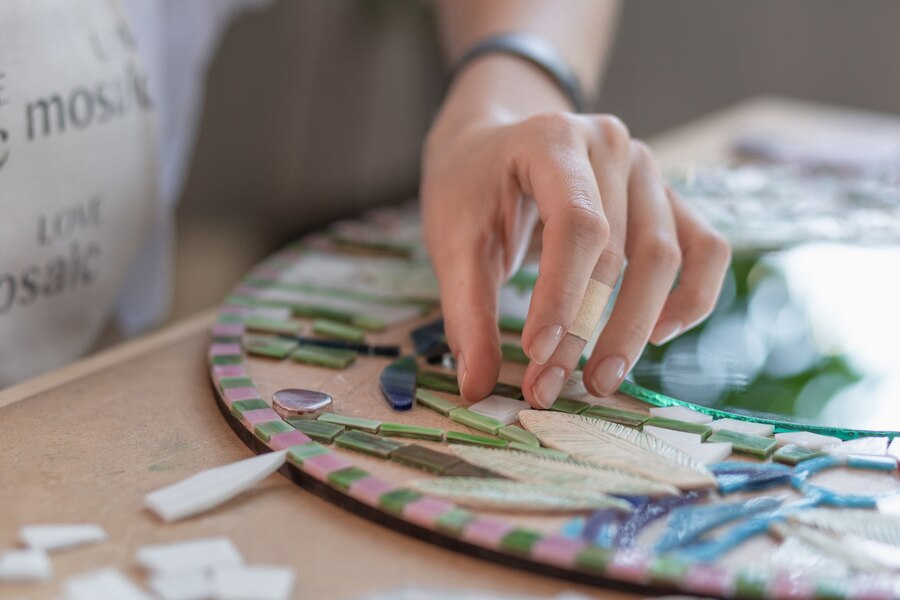
In today’s world, where sustainability and creativity go hand in hand, DIY wall art using recycled materials and acrylics has become a popular trend. Not only does it allow you to express your artistic side, but it also helps reduce waste and create unique, personalized home decor. Whether you’re a seasoned artist or a beginner looking to explore your creative side, this guide will walk you through the process of creating stunning wall art using materials you already have at home. From choosing the right materials to adding the final touches with acrylic paints, this article will provide you with all the information you need to create eco-friendly and visually appealing wall art.
Why Choose Recycled Materials for DIY Wall Art?
Recycling is more than just a trend; it’s a necessity in today’s environmentally conscious world. By using recycled materials, you’re not only reducing waste but also giving new life to items that might otherwise end up in landfills. According to the Environmental Protection Agency (EPA), recycling helps conserve natural resources and reduces greenhouse gas emissions. When it comes to DIY wall art, recycled materials like old newspapers, cardboard, fabric scraps, and even broken furniture can be transformed into stunning pieces of art.
Acrylic paints, on the other hand, are versatile, easy to use, and come in a wide range of colors. They dry quickly and can be used on almost any surface, making them the perfect choice for DIY projects. Combining recycled materials with acrylics allows you to create unique, one-of-a-kind wall art that reflects your personality and style.
Materials You’ll Need for DIY Wall Art
Before you start your project, gather all the necessary materials. Here’s a list of items you might need:
- Recycled Materials: Old magazines, cardboard, fabric scraps, wooden pallets, bottle caps, or any other items you can repurpose.
- Acrylic Paints: A variety of colors to bring your design to life.
- Paintbrushes: Different sizes for detailed work and larger areas.
- Adhesives: Glue, mod podge, or a hot glue gun to assemble your materials.
- Base Surface: Canvas, wooden board, or even an old picture frame.
- Protective Gear: Gloves and aprons to keep yourself clean.
- Sealant: A clear varnish or sealant to protect your finished piece.
For more inspiration on materials, check out Pinterest’s DIY Wall Art Ideas, where you’ll find countless creative ideas.
Step-by-Step Guide to Creating DIY Wall Art
Step 1: Choose Your Design
The first step in creating DIY wall art is deciding on a design. This could be anything from abstract patterns to nature-inspired themes. If you’re unsure where to start, websites like Canva offer free templates and design ideas that you can use as inspiration.
Step 2: Prepare Your Base Surface
Once you’ve chosen your design, prepare your base surface. If you’re using a wooden board or canvas, make sure it’s clean and free of dust. You can also use an old picture frame or even a piece of cardboard as your base.
Step 3: Assemble Your Recycled Materials
Next, gather your recycled materials and arrange them on your base surface. For example, if you’re using old magazines, you can cut out colorful images and create a collage. If you’re using bottle caps, arrange them in a pattern or design. Use adhesives like mod podge or a hot glue gun to secure the materials in place.
Step 4: Add Acrylic Paint Details
Once your materials are securely in place, it’s time to add details with acrylic paints. Use different brush sizes to create textures and patterns. For example, you can use a fine brush to add intricate details or a larger brush to fill in larger areas. Don’t be afraid to experiment with colors and techniques.
Step 5: Seal Your Artwork
After your paint has dried, apply a clear sealant to protect your artwork. This will also give it a polished, professional look.
Step 6: Display Your Masterpiece
Finally, find the perfect spot in your home to display your DIY wall art. Whether it’s in your living room, bedroom, or even your office, your creation is sure to be a conversation starter.
Comparison Table: Recycled Materials vs. New Materials
| Aspect | Recycled Materials | New Materials |
|---|---|---|
| Cost | Low or free | Can be expensive |
| Environmental Impact | Reduces waste and conserves resources | May contribute to resource depletion |
| Uniqueness | One-of-a-kind, creative designs | May lack originality |
| Availability | Easily found at home or local recycling centers | Requires purchasing from stores |
| Durability | Depends on the material used | Often more durable |
FAQs About DIY Wall Art Using Recycled Materials and Acrylics
1. What types of recycled materials can I use for DIY wall art?
You can use a wide variety of materials, including old magazines, cardboard, fabric scraps, bottle caps, wooden pallets, and even broken jewelry. The possibilities are endless!
2. Do I need to be an artist to create DIY wall art?
Not at all! DIY wall art is all about creativity and self-expression. You don’t need to be a professional artist to create something beautiful.
3. How do I protect my DIY wall art from damage?
Applying a clear sealant or varnish will help protect your artwork from dust, moisture, and fading.
4. Can I sell my DIY wall art creations?
Absolutely! Many people sell their DIY creations on platforms like Etsy or at local craft fairs.
5. What are some tips for beginners?
Start with simple designs and gradually experiment with more complex techniques. Don’t be afraid to make mistakes—they’re part of the creative process!
Conclusion
Creating DIY wall art using recycled materials and acrylics is not only a fun and rewarding activity but also a great way to contribute to a more sustainable future. By repurposing items that would otherwise be discarded, you’re reducing waste and creating something truly unique. Whether you’re looking to decorate your home or give a personalized gift, this guide provides all the information you need to get started. So, gather your materials, unleash your creativity, and start creating your own eco-friendly masterpieces today!
For more inspiration and ideas, check out The Spruce Crafts and DIY Network, two excellent resources for DIY enthusiasts.
Remember, the key to successful DIY wall art is to have fun and let your creativity flow. Happy crafting!
